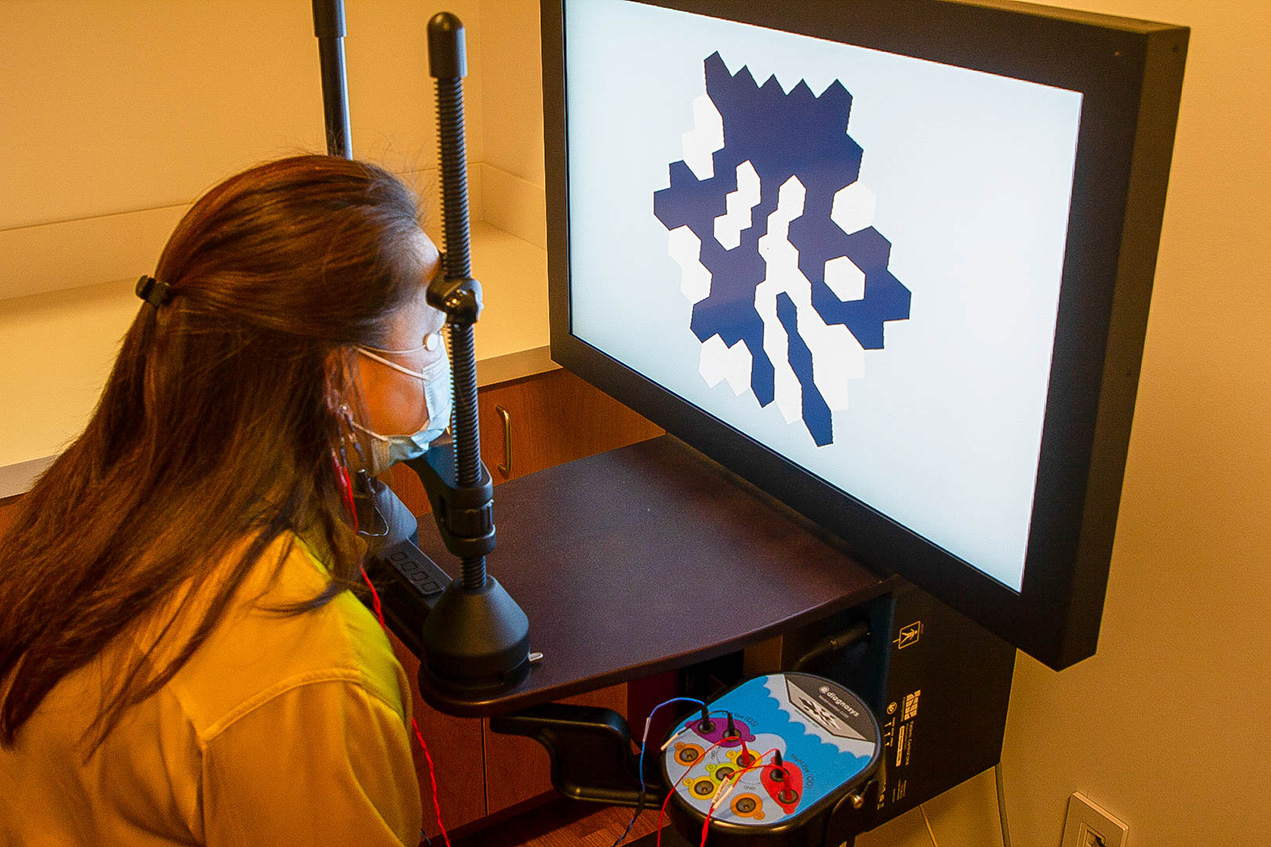The USC Roski Eye Institute will open its new Visual Electrophysiology Unit (VEU) to community physicians in April. Ophthalmologists may directly refer their patients to the VEU for testing.
The VEU features state-of-the-art equipment that aids in the detection of inherited retinal diseases, such as retinitis pigmentosa, as well as optic nerve diseases and a variety of other eye conditions. Among many advanced pieces of equipment, the VEU includes an electroretinogram, or ERG machine, which measures retinal function by recording electrical responses of the retina when light is shone into a patient’s eye.
“Think of it like an electrocardiogram for the eye,” said Hossein Ameri, MD, PhD, associate professor of clinical ophthalmology at the Keck School of Medicine of USC, and the director of the USC Retinal Degeneration Center, who spearheaded the creation of the VEU.
In addition to serving patients and the ophthalmic community, the VEU will service USC Roski Eye Institute’s research and academic missions and will create a platform for investigating the pathophysiology of eye diseases. The VEU will also give residents and fellows access to the most modern versions of visual function tests and provide them with the opportunity to learn about advanced diagnostic tools.
Example of tests performed at the VEU include:
- Full field electroretinogram (ffERG), commonly called ERG
- Pattern electroretinogram (pERG)
- Multi-focal electroretinogram (mfERG)
- Flash visual evoked potentials (fVEP)
- Pattern visual evoked potential (pVEP)
- Electro-oculogram (EOG)
- Dark adaptometry
- Pupillometry
- Automated Goldmann visual field, including both kinetic perimetry and static perimetry
- Microperimetry
- Farnsworth Munsell 100 Hue color vision test


